|
2018 Riding Season for the Delta-11 Prototype and Misc Other Accomplishments |
|
Taking a Year Off (From Riding our Fast Electric Motorcycle) So, I took a year off from riding the Delta-11 Electric Motorcycle prototype. I did this on purpose, to save insurance fees, to experiment with other electric vehicles and to experiment with other ways of saving energy. The major projects and expenditures revolved around the purchase, retrieval, upgrades and experiments with a used 2015 Nissan Leaf SV. This picture was taken when we were installing a trailer hitch for hauling bicycles on the Leaf. The D-11 prototype can be seen peeking out from under a sheet in the background. 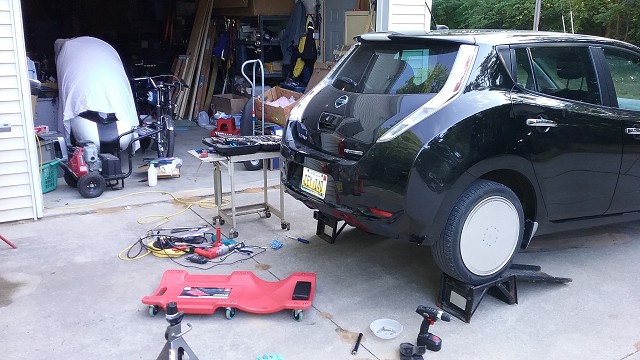 |
|
Big Changes Planned for 2019 for Delta Bikes I was actively thinking about ways to improve the Delta-11 and Delta-12 prototype bikes and did actual modifications to the Delta-12 bike. But, the major changes are to come as I have forged new business relationships with AVID Manufacturing Resources, World Class Prototypes, and several super talented designers who can generate the sexy body work I have dreamed of putting on the Delta bike platforms. The Delta Bikes have been relocated to AVID in Holland, Michigan and modifications are in the works for 2019. 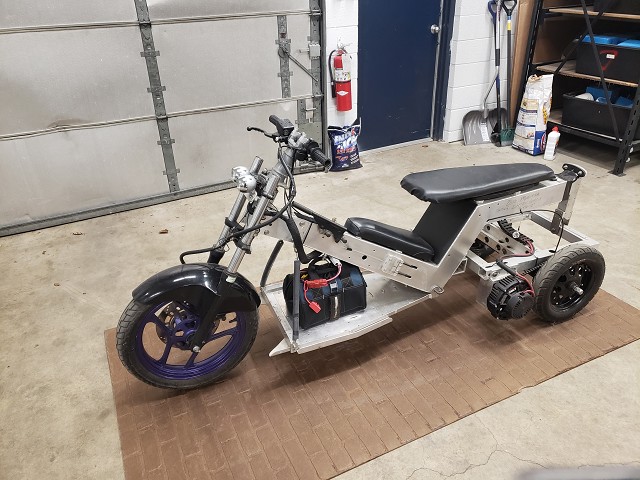 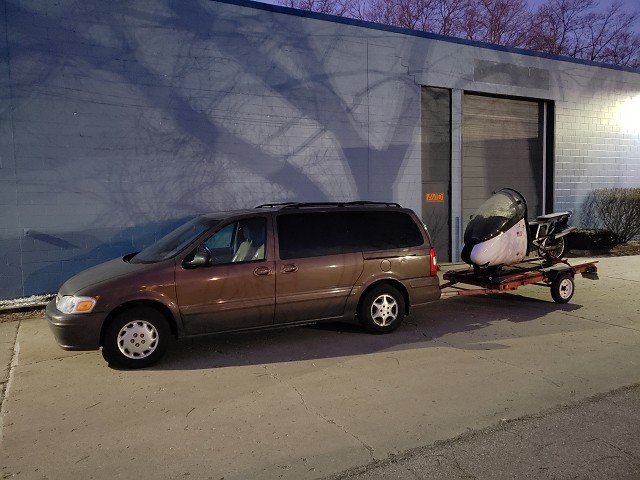 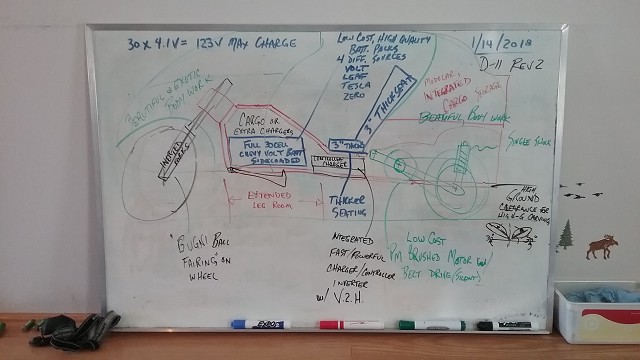 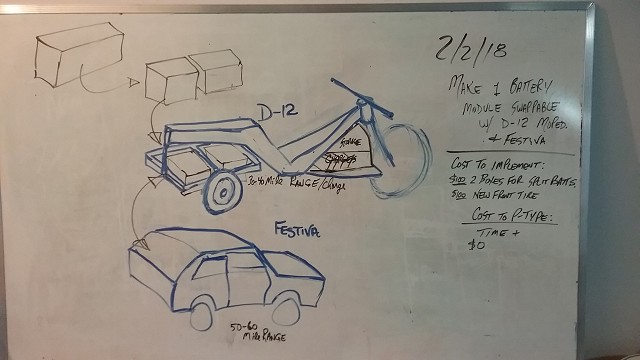 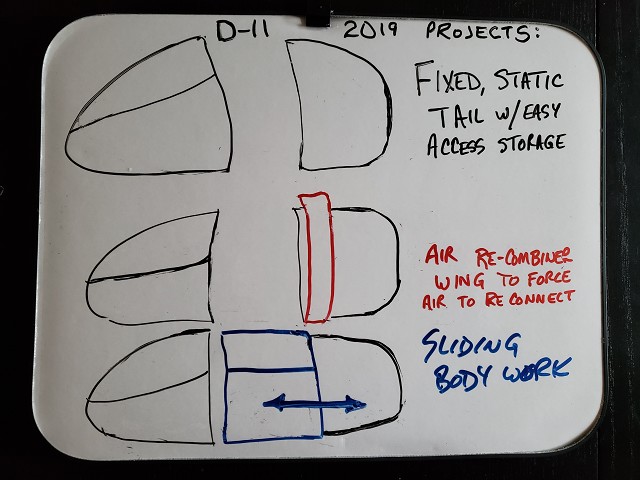 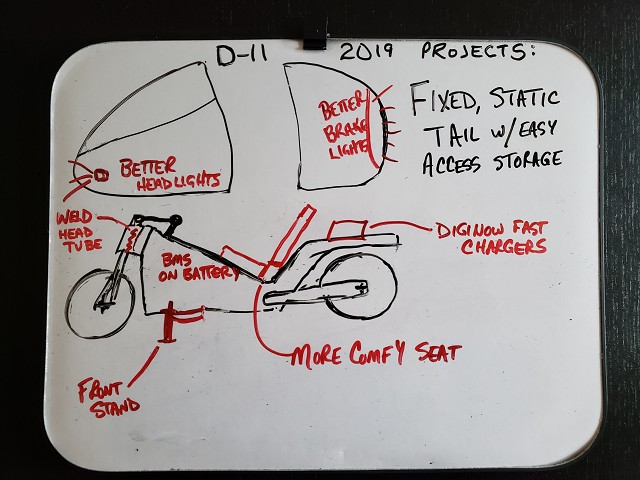 |
|
Energy Use Big Picture In January, I attended an excellent presentation by John Richter to review the state of energy production in the State of Michigan. The main take away for me was that in order for the planet to survive the average American will need to cut their energy consumption by 10x. I did a lot of thinking about this and put together this visualization for me to chart a road map from where I've been to where I am headed. It's a journey of changing my lifestyle and consumption habits. 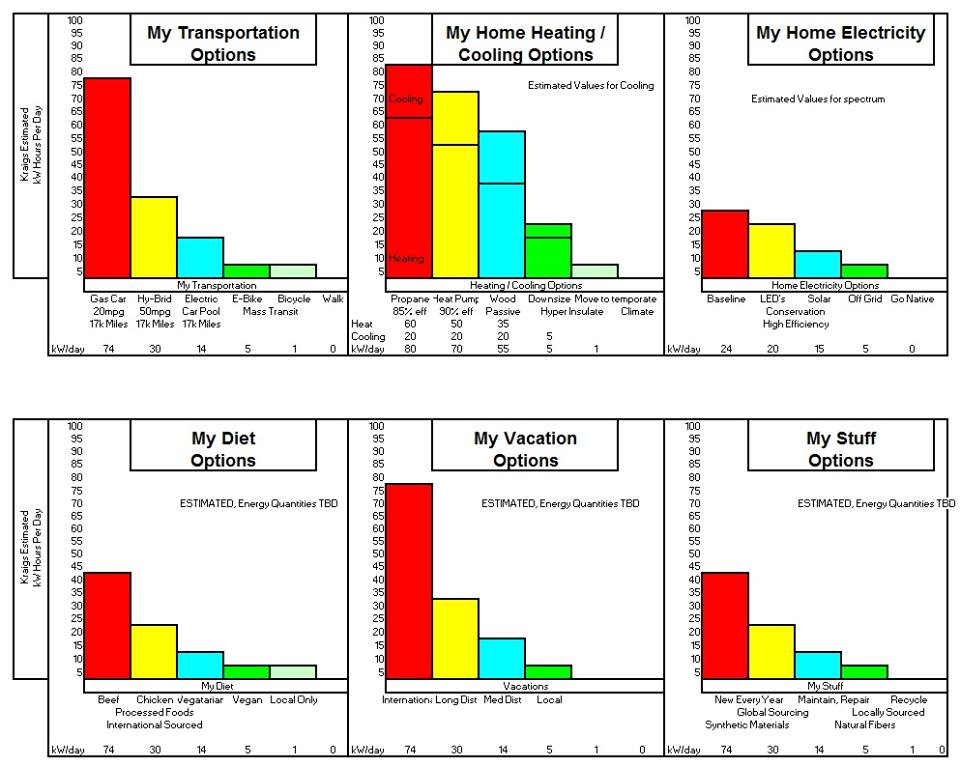 1. Conservation is the easiest and least costly way to cut my consumption in nearly 1/2. For instance, I don't need to buy a new car, I can just drive less miles. 2. Each category is on a continuum. There's where I am at as an average American, and that consumption state is really quite bad. And there's an ideal state where I can head as I make changes in my states. For instance, when I do purchase a replacement something, I can look at the ideal and strive to go that direction. 3. The ideal energy footprint is pretty much a native American lifestyle. Pretty ironic really, we slaughtered the natives, stole their land and setup a ecologically and culturally inferior system, and now I'm working my way back there. Or, for those who don't like the native religions, can you tolerate that I'm gravitating towards a more Garden of Eden or Amish model lifestyle?.... Other Links on this subject: The best way to reduce carbon emissions Climate Strange Let's Get Real - Renewable Energy is not going to save us Crash Course on Rapid Change in Finite World |
|
Nissan Leaf Projects BACKGROUND: I've been driving a converted electric Festiva for a few years now. It, unfortunately, doesn't have good enough heat to drive when it is below freezing. So, I've wanted to purchase at least one electric car we could drive year round. The Nissan Leaf was purchased for my wife to drive, and for Schultz Engineering, LLC to have available for doing product development for aftermarket Leaf products (including DC Fast Charging and Vehicle to Grid). Four other families we personally know purchased production electric cars this year (Mike and Phi Cramer, Tony Helmholdt, Ben Nelson, and Karl Bloss). We've sold all but one of our gas powered cars (we have kept our 2000 Oldsmobile Silhouette Mini van for long trips, heavy hauling, trailer pulling etc.). Since we plan to use the gas powered van for camping I built a removable bunk bed this summer that fits in the back of the van (the bed folds flat when it's not in use).  The two most common questions are, "What is your range?" and "How long does it take to recharge?". It depends. RANGE: 45-70 miles / Charge 70 miles around town (45mph and less) 60 Miles Mixed Commuting (town + 55mph) 45 Miles Highway Speeds if not drafting (70mph) RECHARGE TIME: 1-3 hours 3 Miles per hour on 110V Outlet = 13-16 hours 20 Miles per hour on J1772 Outlet = 1-3 hours 125 Miles per hour on CHADEMO Hook up = 30 minutes The most important thing about deciding to drive an electric car for a given trip is that it has enough range to make it there and back WITHOUT charging (because you never know if you'll be able to charge in route). Recharge time really doesn't matter as most of the time you are charging at night when you are sleeping and so you don't care how long it takes. Range and Recharge Assumptions: Our 2015 Nissan Leaf SV with 36,000 miles, the battery has a capacity of 20 kWh (it was 24 kWh when new), range is stated without heater or air conditioning running (warm weather). That range may seem like it's not enough, but I listed all our normal trips before we bought the car and identified only 2 or 3 per month outside our range. And in the first 7 months and 9,000 miles we've driven it, we've only HAD to stop and wait for it to charge two times! I HAD to stop to charge it when I drove it home from Ohio. My wife HAD to stop and charge it one day when she forgot to charge it the night before. Otherwise, our normal recharge time has been about 30 seconds per day (the time it takes to plug it in and unplug it). So, you could say we have an average range of 4,500 miles and a 2 minute average recharge time. 1. Leaf Road Trip To get the Leaf home from Ohio I rented a gas car to drive down to Ohio to pick it up from the Nissan dealer. The Leaf had just come off a Lease in Georgia and had 36,000 miles on it. 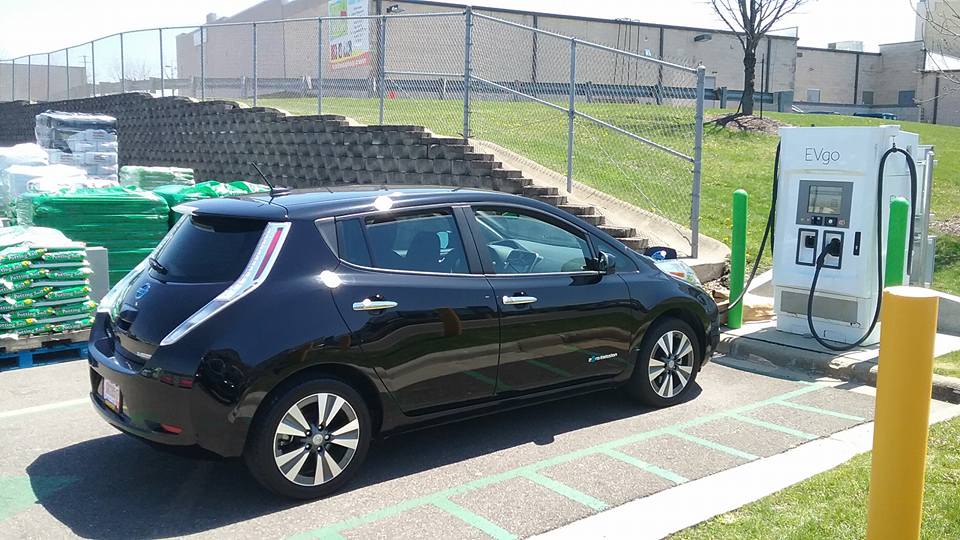 2. Leaf Level 2 Charging I installed Level 2 charging (220 Volt, 30Amp) at my parents house (one of the trips outside our normal range) and my own garage (we already had it installed in the Schultz Engineering workshop). Here is our Leaf charging from the J1772 by the solar panels near the workshop. The five solar panels shown produce about 5 kiloWatt Hours per day (that is enough to power this car between 15 and 20 miles). 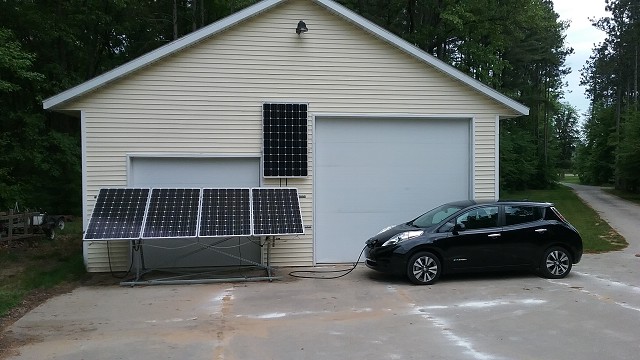 I purchased a CHADEMO plug and have plans to eventually do a project that uses the LEAF to store energy for use during off-peak and/or run the house with an inverter. 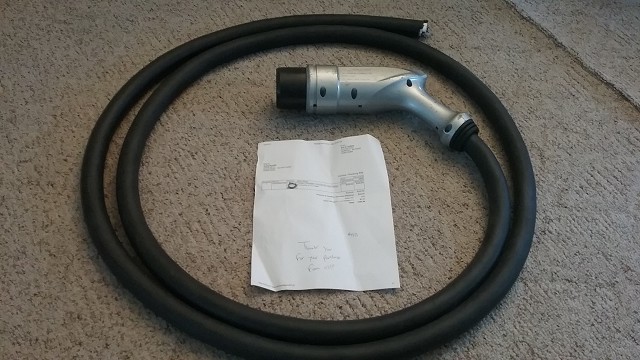 As I was applying lots of masking tape to hold a grill block in place just before I took this picture, my youngest son walked past and wondered aloud, "Sooo, Dad.... Is this why we can't have nice stuff?" 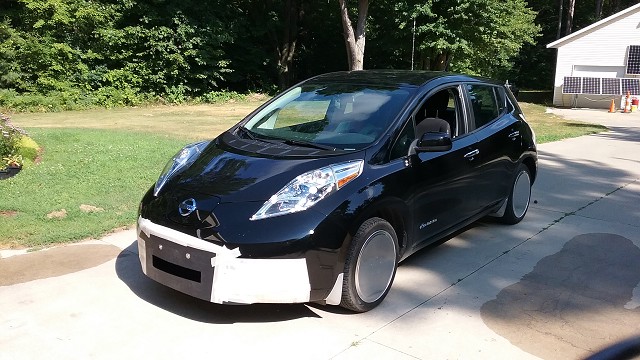 I tested two different versions of 19" aluminum pizza pans (from www.webstaurantstore.com). They were retained by custom lug nuts that I modified to accept 1/4-20 button head screws. 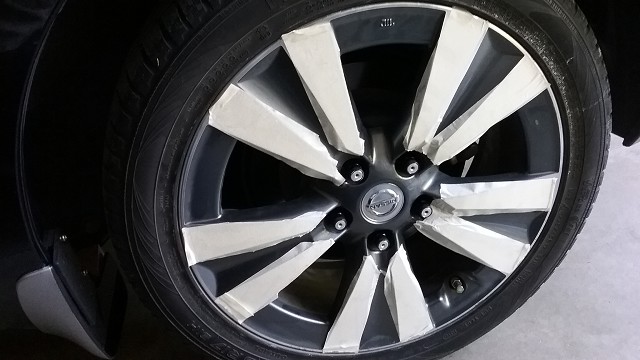 We get between 3 and 5 miles per kWh on the dash board. If we drive carelessly we get 3. If we drive carefully with minimal use of AC or Heat we can get over 4. Getting 4.5 or 5 miles per kWh at the speeds we normally travel with Nokian WR G3 tires is hard (these are Low Rolling Resistance Snow tires). We are looking forward to getting LRR summer tires in 2019. 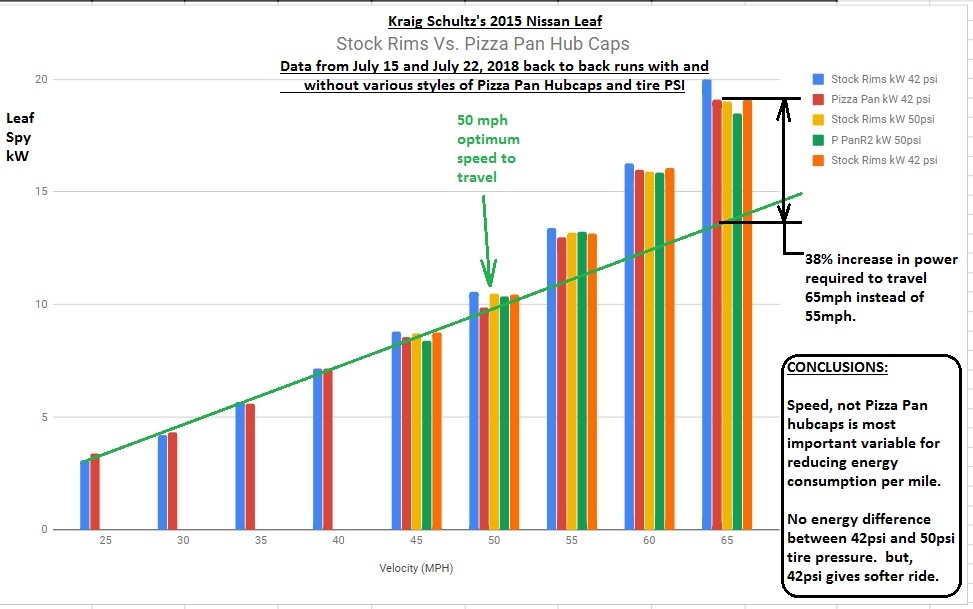 For our 2015 Leaf, if we drive 50mph instead of 65mph we can reduce energy consumption by 38%. Having aerodynamic hubcaps can save 4%. Which is easier and less expensive? In years of work and research with electric vehicles and clean energy technology. I've found one thing to be universally true: Lifestyle change and reducing waste are the fastest and least expensive way to save the planet. Technology is not the answer, changing our lifestyles is the answer. 5. Leaf Bike Rack 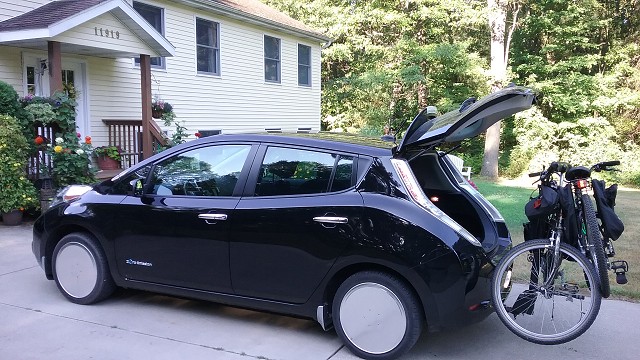 My biggest concern on the trailer hitch was I thought we wouldn't be able to access the rear hatch without removing the bikes (like on our mini-van). But guess what? The hatch clears the bikes! We are home free to go camping and all kinds of fun things we love to do. We love our Leaf and really hate it when we have to take the old mini-van anywhere. I was amazed to see that hauling the bikes on the bike rack didn't impact our fuel economy by a noticable amount. The Curt Manufacturing Model 11396 Hitch Kit installed easily and is a perfect fit for our Leaf. 6. Leaf Battery Charging to 80% and State of Health Early Leaf's like ours have a relatively small battery pack. So, as the battery pack deteriorates the loss of range could make the car less useful. It's well documented that babying a Lithium Ion battery by avoiding having it sit at high states of charge (greater than 80%) for long periods of time or at extremely high temperatures while at high state of charge is better for the battery. So, I built a timer box with remote control activator to make it easy to charge to 80% when we first get home and then top it off to 100% just before leaving the house. 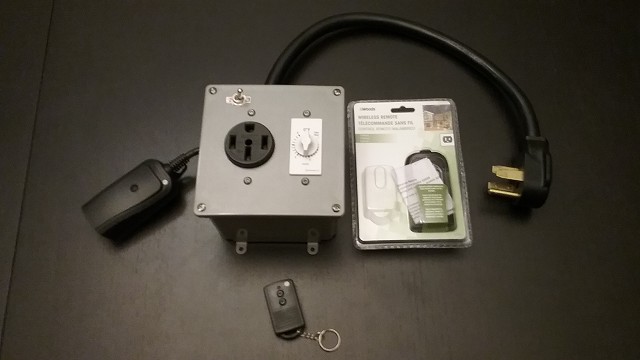  A few years back, the US government changed the rules for how far anti-whip-lash head rests can be from the back of test dummies heads. The inexpensive response of most car makers was to make the headrests jut so far forward that they put people with good posture into a bad ergonomic conditions. I turned our head rests around 180 degrees and then added foam that I secured with black, reusable, "cloth" grocery bags. It was a quick fix, but one that made the car seats more ergonomic, comfortable and safe for my wife and I. It will be easy to change the headrests back to stock should we ever sell the car.  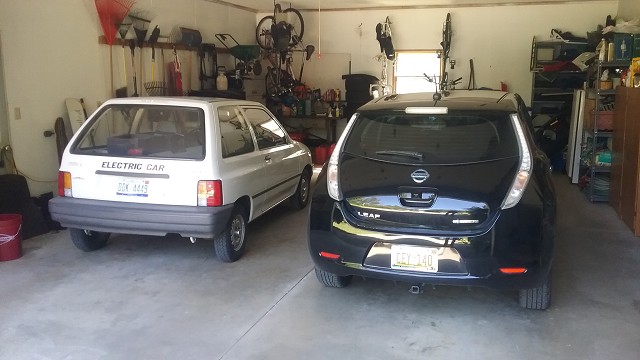 Unfortunately, our solar panels only produce enough energy to power one house or one electric car. Solution: Drive less? Install more solar panels? Carpool? Yes. 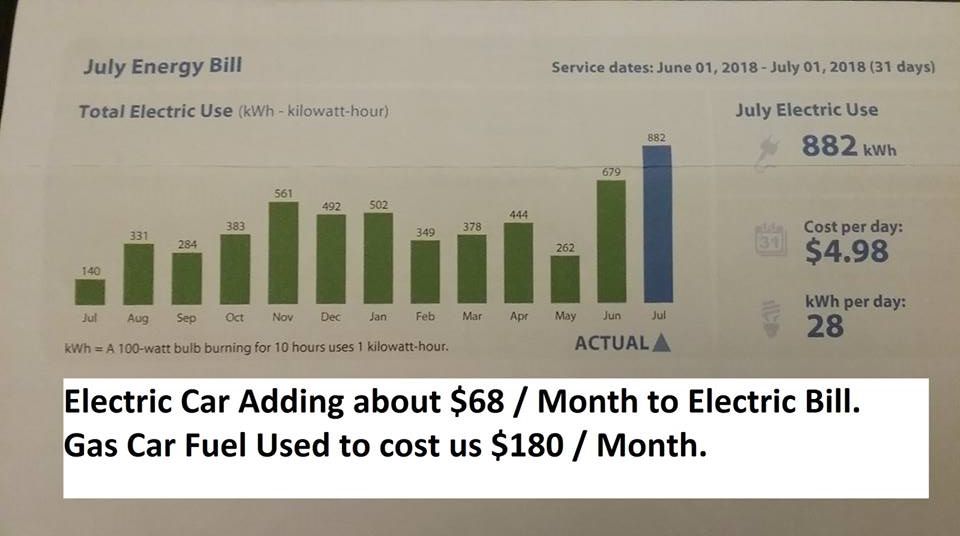 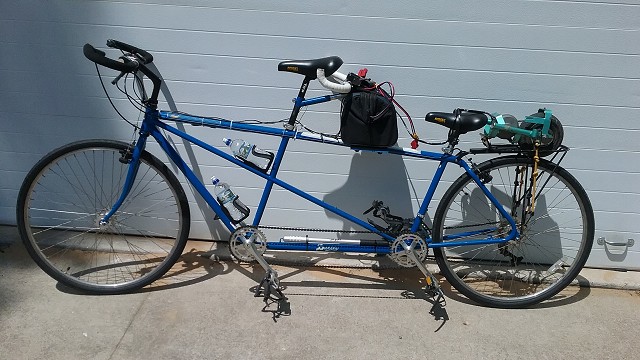 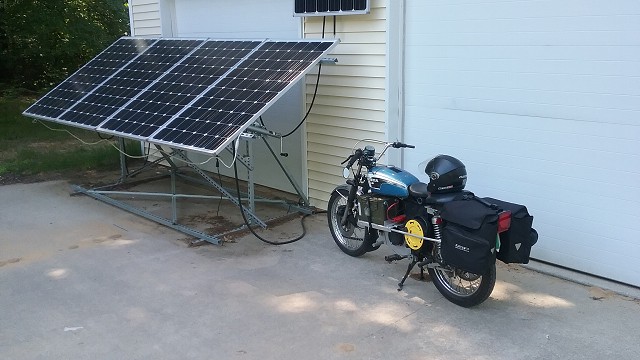 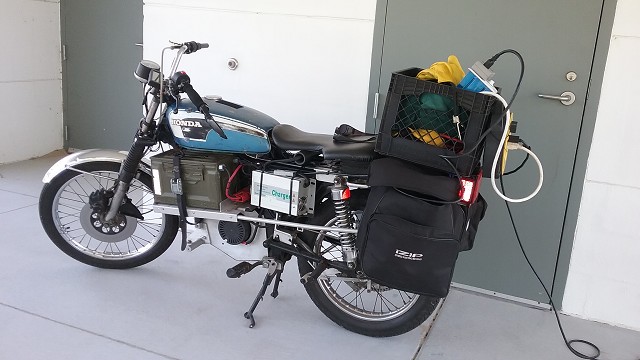 |
|
Final Notes about 2018 I enjoyed going on quite a few electric car road trips with my wife, Maggie, this summer. This is something I miss when riding my electric motorcycle. Maggie doesn't like riding on motorcycles, but she likes our electric cars a lot - she loves to save money on fuel, and likes the safety and practicality of cars over motorcycles. She likes us to go shopping together with our EV's.  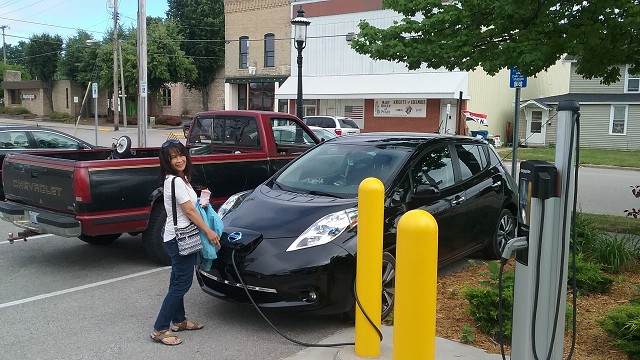  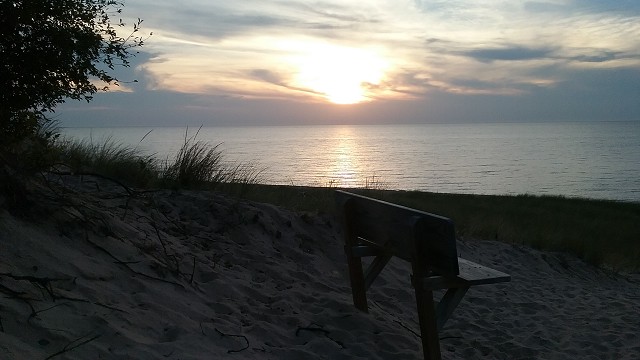 |
|
(Next Page) |
|
Inventing a better tomorrow today... Copyright 2018, Schultz Engineering, LLC, written by Kraig Schultz |